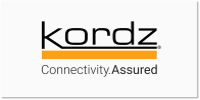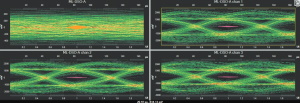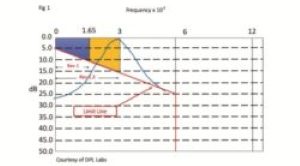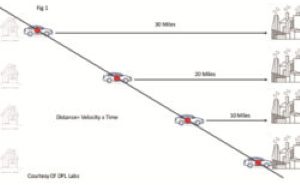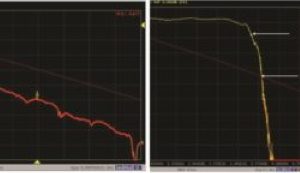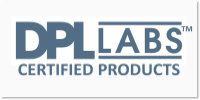
DPL Digital-HD (DHD) Performance Testing & Certification Program
DPL Labs provides technical performance testing services for Digital-HD (DHD) products. In 2007 we introduced the first independent Digital-HD (DHD) performance testing and certification program where DPL Member Companies submit their products for evaluation. Successful products are granted the DPL Seal of Approval which signifies high performance and reliability. Today that program has been expanded to include Full 4K Product Certification. Only the Best Pass the Test.
DPL Full 4K Product Certification
4K and 7 years ago…
DPL Labs introduced the first independent Digital-HD (DHD) performance testing and certification program. By way of hundreds of case studies and thousands of hours of research, DPL Labs developed a testing program that enabled manufactures to measure the performance and reliability of their products. Products that met the strict DPL performance criteria were given the DPL Seal of Approval and published on the DPL Approved Products web pages so integrators, retailers and end users could easily find the best performing and most reliable Digital-HD (DHD) products.
DPL Member Brands at Future Ready Solutions
DPL Expands to Full 4K Product Certification
Over a year’s worth of additional research and development has resulted in improved testing procedures, upgraded test equipment and the introduction of new state of the art software culminating in DPL’s New Expanded 4K Product Certification Program. Designed to combat the fears of display and cable manufacturers as well as end users, the expanded 4K testing program now includes a battery of additional tests and offers two levels of 4K certification encompassing the entire 18Gbps spectrum. In addition, the new program integrates DPL’s in depth experience with past Digital-HD (DHD) issues and failures to instill confidence in the reliability of certified products.

Only the Best Pass the Test
Currently, all the DPL members have successfully passed this new rigid 4K testing program. Check our DPL Approved Products database for over one hundred cables that have already been approved for 4K.
What is 4K?
4K is the next level of High Definition Television (sometimes referred to as Ultra HD) and offers four times the resolution of the currently mainstream 1080p. That means it has four times the number of pixels, but that’s not actually what the ‘4’ in 4K represents. 4K is shorthand for four thousand horizontal pixels although the actual resolution on consumer televisions is slightly less at 3840 x 2160. In fact 4K is the equivalent of 2160p. It has doubled the horizontal resolution and double the vertical resolution of 1080p which quadruples the overall resolution. If you combined four 1080p screens together as we demonstrate in the animation at the top of the page you get 4K.
What does 4K mean?
Four times the resolution is a lot more data and in order to transmit that much data from a source (Blu-ray player, cable box, etc) to a television we need a lot more bandwidth. A lot more. The current digital video interface is designed to support the additional bandwidth but as we’re all too familiar with at DPL Labs not all products are created equal and many existing products weren’t designed with this level of bandwidth in mind.
So How Can 10.2Gbps Cables Support an 18Gbps Transmission Signal?
This has been the most common question we’ve heard over the last year from retailers, manufactures and end users. The answer to this question is multifaceted but really only boils down to 5 major issues. If all Digital-HD (DHD) products can in fact nail these 5 issues, all of the fears and concerns for 4K transmissions will fade away.
-
Knowledge (Understanding the 4K System Environment)
-
Type of Transmission Line (Passive Cables, Active Cables, Category 5/6/7 Products, SDI, Wireless, Fiber Optic)
-
Transmission Line Distance
-
Attenuation Linearity
-
Calculus Within the Transmission Matrix
Why Two Levels of DPL 4K Cable Certification?
4K transmission is all about bandwidth. The higher resolution of 4K requires higher bandwidth but resolution is only a part of the story. Frame Rate, Color Depth and Color Sampling are also important factors and also require bandwidth. The various permutations of Resolution, Frame Rate, Color Depth and Color Sampling make up different feature sets. The more features the higher the bandwidth required. In order to ensure compatibility with different feature sets DPL is offering two levels of certification:
-
4K 10.2G – Ensures 4K compatibility with bandwidth certified up to 10Gbps
-
4K 18G Deep Color – Ensures 4K compatibility with bandwidth certified up to 18Gbps enabling Deep Color through multiple feature set permutations
To further demonstrate the importance of bandwidth we can plot some of the feature sets listed in the table above on a graph:

Why is Deep Color Important?
The real difference in picture quality between the different permutations of 4k comes from color detail. Color Depth refers to how many different shades of color are available – the deeper the better. Each permutation of 4k requires extra bandwidth as the color detail improves and there are many different ways to do this as you can see from the table above. An example of how color depth is noticeable in picture quality is the color banding that becomes evident when the color depth is low. Look at the images below where we’ve simulated the color banding that occurs in the sky at low levels of color detail (on the left) and how with Deep Color the full gradient of colors is available and the color banding is non-existent, revealing a more natural picture.


